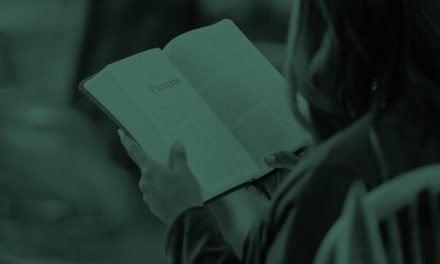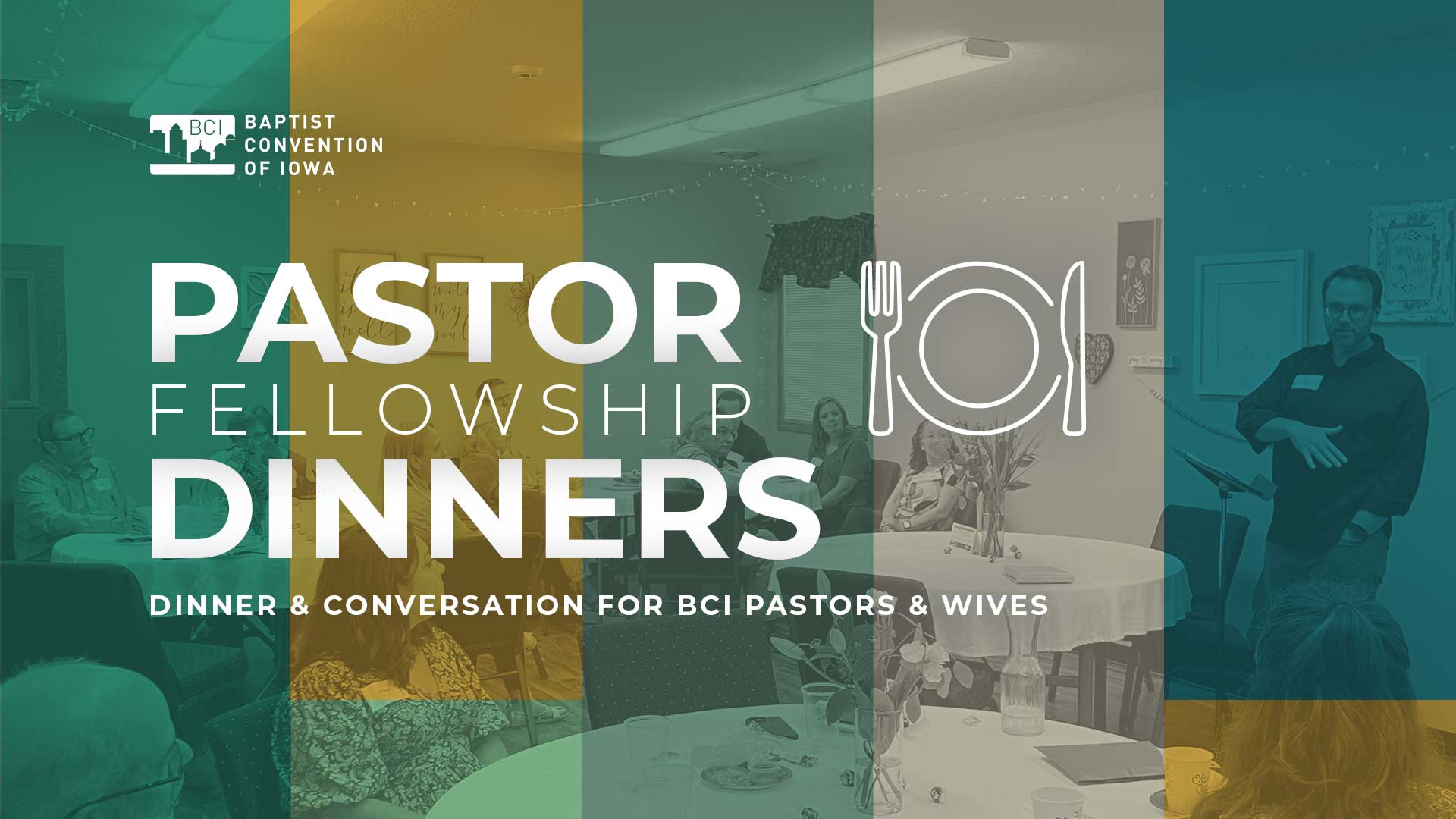By David Williams
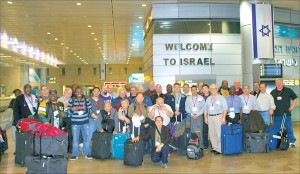 ISRAEL – After a 14-hour flight, a good night’s sleep and a hearty Middle Eastern breakfast, the Minnesota-Wisconsin Baptist Convention’s Israel tour group boarded a bus Thursday morning Jan. 16 and embarked on a whirlwind tour of more than 50 historical biblical sites in seven days.
ISRAEL – After a 14-hour flight, a good night’s sleep and a hearty Middle Eastern breakfast, the Minnesota-Wisconsin Baptist Convention’s Israel tour group boarded a bus Thursday morning Jan. 16 and embarked on a whirlwind tour of more than 50 historical biblical sites in seven days.Appropriately, Steve Melvin took the bus microphone and led the group in singing “Footsteps of Jesus,” before David Sundeen led us in prayer.
The group was composed of 36 ministers (pastors and associational/state convention leaders), Judith Sagen who served as tour facilitator, and Tim Parker who is with Imagine Travel and Tours through which the trip was booked.
Real people, real places
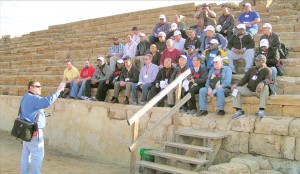 The first stop was at Caesarea Maritima, the site of an ancient elaborate Mediterranean Sea harbor built in 21 B.C. by Herod the Great. Although the aqueduct, buildings and sea wall that protected the ships are now in ruins, they stand as mute testimony of people and places recorded in the New Testament.
The first stop was at Caesarea Maritima, the site of an ancient elaborate Mediterranean Sea harbor built in 21 B.C. by Herod the Great. Although the aqueduct, buildings and sea wall that protected the ships are now in ruins, they stand as mute testimony of people and places recorded in the New Testament. Caesarea was the place where Pontius Pilate ruled during the time of Christ. It was also the place where Peter shared the gospel with the Roman centurion Cornelius and his family, convincing Peter and the rest of the church that the good news was available to Gentiles as well as Jews. The Apostle Paul often traveled through Caesarea when sailing to and from Palestine.
As we gathered on the steps of the hippodrome which once held 20,000 spectators watching chariot races, tour leader and MWBC Executive Director Leo Endel pointed out that this site and the others we would visit are evidence of the accuracy and reliability of the Bible.
“The gospels are grounded in history,” he said. “We have a very clear and reasonable faith. This is a real story about real people living in real places.” Endel promised that after visiting the Holy Land, “the names of people and places will come to life for you as you read the Bible.”
Armageddon
 Later that day we stood at the top of Mount Carmel where, in a contest with 450 prophets of Baal over whose god was real, the prophet Elijah prayed and God answered by sending fire from heaven to consume his sacrifice and prove his faith.
Later that day we stood at the top of Mount Carmel where, in a contest with 450 prophets of Baal over whose god was real, the prophet Elijah prayed and God answered by sending fire from heaven to consume his sacrifice and prove his faith.From there we looked down at the vast Jezreel Valley, or the Plain of Megiddo. Because of its strategic location on the route between Asia and Africa, the plain has been the site of dozens of major battles throughout history even through World War I, Endel said.
One of the earliest recorded battles on that plain was the one between Egypt and Israel in which King Josiah was fatally wounded. The Book of Revelation tells us that the final battle in the history of our planet will be waged on the Plain of Megiddo, also known as Armageddon. I was overwhelmed as I surveyed the massive undeveloped valley below, standing empty for thousands of years as though waiting and ready for its God-ordained role in the last days.
Sea of Galilee
 Friday morning we walked from our hotel across the street to a museum housing the remains of a 2000-year-old boat found in 1986 buried in the mud on the shores of the Sea of Galilee. It is possible that Jesus Himself once sat in that boat, or at least one very much like it.
Friday morning we walked from our hotel across the street to a museum housing the remains of a 2000-year-old boat found in 1986 buried in the mud on the shores of the Sea of Galilee. It is possible that Jesus Himself once sat in that boat, or at least one very much like it.Then we walked to the shore and boarded a more modern vessel with a motor and space for 50 passengers for a short cruise around this fresh water lake that is so prominent in the Gospels. Jesus walked on these waters and Peter did too, briefly. Jesus calmed a storm here, causing His followers to wonder, “What kind of man is this?”
On the shores of the Sea of Galilee are places we read about in the New Testament – Capernaum, Tiberias, Bethsaida, Gennesaret. As we looked at the coast we were reminded of fishermen dropping their nets to follow Jesus and become fishers of men; a madman being cleansed of a legion of demons which then entered a herd of pigs, plunging them down the hill and into the lake to drown; a woman being healed of a 12-year illness after touching the cloak of Jesus; a 12-year-old girl being raised from the dead as Jesus told her, “Little girl, get up!”
Mount of Beatitudes
And we remembered a sermon being preached, the longest sermon of Jesus recorded in the Bible, the Sermon on the Mount, preached on a hillside above the Sea of Galilee. After our boat ride, the bus took us to the top of a hill where we found the Church of the Beatitudes, built in 1938 overlooking the place where it is believed that Jesus preached that sermon.
Although the octagonal building (eight sides for the eight Beatitudes) was impressive, we were more moved by our walk down the hill to what may have been the actual spot where the sermon was delivered. Chris Heng read the Beatitudes and then other pastors continued reading the entire Sermon on the Mount, section by section. As Francis Tabla was reading the Lord’s Prayer in the sermon, the rest of us joined with him in reciting it aloud.
Baptism in the Jordan
We made two more sites before lunch, including the place where the resurrected Jesus prepared breakfast for some of the disciples and restored Peter by telling him to “feed my sheep.” After lunch we went to Capernaum and saw a church built over the top of what is thought to be Peter’s house. Our last stop was Yardenit, a baptismal site on the Israeli side of the Jordan River where several areas have hand rails for those in line to be baptized and seating for those watching. The organization running the site provides changing rooms and baptismal robes for rent. Eleven of our group decided to be baptized that day in the Jordan River in identification with Jesus who was baptized in that river by John the Baptist.
That evening, as we met in an upper room at the hotel and reflected on the day, Steve Melvin led us in singing, “On Jordan’s Stormy Banks I Stand.” Pastors shared what was most meaningful about the day to them – the reading through the Sermon on the Mount, their baptism in the Jordan, the moment on the lake when the pilot turned off the motor and everything was perfectly quiet and still.
Francis Tabla said it was special to him that he was saved on that day, Jan. 17, 37 years ago, and on the same day this year he was baptized in the Jordan River.
Sabbath devotion
It was Friday evening and Sabbath had begun, giving Endel an occasion to talk to the group about the importance of fitting the principle of Sabbath rest into our lives. The MWBC Executive Board recently approved a three-month sabbatical for Endel which he will be taking March, April and May. He has also had opportunity recently to encourage churches to grant sabbatical leaves to their pastors to provide them a time of rest and refreshment.
“We are great Sabbath-breakers,” Endel said. “We don’t work the Sabbath into our lives.”
He said the Sabbath is important to God, who put it “right there in the middle of the Ten Commandments, and Judaism takes it seriously to this day. . . . We are not under the law and obligated to observe the Sabbath, but the principal of rest is still there.
“What could Sabbath look like in your life?” he asked. “Where could you carve out a Sabbath rest, where you could meet with God, where He could meet with you, and where He could give you rest?”
Upon this rock
The next morning began with a long bus ride up north to Dan where Abram caught up with the four kings who had plundered Sodom and Gomorrah, taking his nephew Lot captive. Centuries later during the time of the Divided Kingdom, Dan and Bethel were the two cities where Israel’s King Jeroboam had set up golden calf idols so the people of his kingdom would not feel the need to go to Jerusalem in Judah to worship.
From there we went to nearby Caesarea Philippi, which sits on a large rock plateau which is 100 feet tall and 500 feet wide. The area was used as a place of pagan worship of the Greek god Pan, the Roman god Apollo, the Roman emperor Augustus, and other false gods.
“This place had a reputation as a place where gods were made and worshiped,” Endel said. “And this was the place that Jesus chose to ask His disciples who they believed Him to be. Peter said, ‘You are the Christ, the Son of the Living God.’ Jesus affirmed him and then, looking at this huge rock wall where false gods had been enshrined, He said, ‘Upon this rock I will build my church.’”
Mount of Olives
 Sunday morning the bus took us to the top of the Mount of Olives where we could look across the Kidron Valley into Jerusalem, built on Mount Moriah where Abraham nearly sacrificed his son Isaac; where later the Jewish temple was built, then destroyed, then rebuilt, then destroyed for good; where since 691 A.D. has stood the gold-topped mosque known as the Dome of the Rock.
Sunday morning the bus took us to the top of the Mount of Olives where we could look across the Kidron Valley into Jerusalem, built on Mount Moriah where Abraham nearly sacrificed his son Isaac; where later the Jewish temple was built, then destroyed, then rebuilt, then destroyed for good; where since 691 A.D. has stood the gold-topped mosque known as the Dome of the Rock.We walked down the mountain, following the path that Jesus may have taken as He entered the city on Palm Sunday. We stopped at a garden of olive trees which is thought to have been the Gethsemane where Jesus prayed on the night before His death, “Not my will, but Thine be done.”
On the side of the Mount of Olives, in a spot lined with trees and large rocks for sitting, we had our Sunday morning time of worship. There was Scripture reading, singing and prayer. Then George Jolly delivered the sermon, a message about the Parable of the Fig Tree from Matthew 24:32-33.
“I want to talk to you about the last days,” Jolly said. “There are four things lacking in our churches, four things we need.”
First, he said, is a sense of urgency.
“If Jesus is coming soon, there needs to be an urgency to our witness,” he said. “The person you’ve been thinking about witnessing to for years — you need to do that right away because we don’t know when Jesus is coming back. . . . We procrastinate because we think we’ve got time, but time is winding up.”
Jolly said we also need a sense of sinfulness.
“We ought to talk to our people about sin,” he told the pastors. “They ought to leave church convicted of their sin. They should not be leaving just feeling good about themselves. . . . John the Baptist had one sermon: Repent. That’s all he talked about.”
A sense of longing is also needed, he said.
“I don’t know about you, but I’m looking for that day when Jesus comes,” he said. “Even so, come quickly, Lord Jesus!”
The fourth thing we need in our churches, he said, is a sense of exclusivity.
“Many tell you they can get to God any way they want,” he said, “but Paul said, ‘I preach only Jesus Christ and Him crucified.’ If you want people saved, Preach Jesus. Preach Him in the morning. Preach Him in the noontime. Preach Him in the evening. You’re not going to get there through Buddha. You’re not going to get there through Bahai Faith. You can be Catholic, you can be Baptist, but you better step into the blood of Jesus.”
Bethlehem, Masada, Dead Sea
After worship we visited the 1:50 scale model of Jerusalem as it was during the life of Jesus and also the Shrine of the Book which is a showplace for the Dead Sea Scrolls discovered in Qumran between 1947 and 1956. Then it was off to Bethlehem for a late lunch and a visit to the Church of the Nativity, the oldest Christian church in Israel, which claims to house the very spot where Jesus was born. We also visited Shepherds’ Field and a cave like those in which shepherds stayed during the First Century.
On Monday we visited Masada, the place where in 72 A.D. 900 Jewish rebels against Roman occupation took a stand and then committed mass suicide rather than surrender themselves to slavery. We saw the Qumran caves where the Dead Sea scrolls were discovered and the Ein Gedi springs which provide an oasis in the midst of the Judean desert. We had the opportunity to swim and bob like corks in the extremely salty Dead Sea. We visited Jericho, the oldest and lowest city in the world.
The Holy City
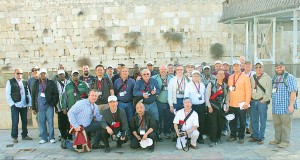 Tuesday we finally entered the City of Jerusalem itself. We prayed at the Western Wall, also known as the Wailing Wall, the only part of the Jewish temple that is still standing. We traveled through the underground Rabbi’s Tunnel that was ground level during the days of Jesus.
Tuesday we finally entered the City of Jerusalem itself. We prayed at the Western Wall, also known as the Wailing Wall, the only part of the Jewish temple that is still standing. We traveled through the underground Rabbi’s Tunnel that was ground level during the days of Jesus. We walked along the Via Dolorosa, the Way of Grief, which was the path that Jesus took as He carried His cross through the streets of Jerusalem. Although most tourists may see it only as a marketplace filled with souvenir shops, those who are looking closely can find on the walls markers for the Catholic 14 stations of the cross. Two of the stations are inside the Church of the Holy Sepulchre which claims to house the place where Jesus was crucified and the tomb in which He was buried.
. We visited an upper room, which some say was the actual location of the Last Supper. We saw the place where Caiphas’ palace would have been, a dungeon below where Jesus might have been kept, a rock path and steps that Jesus was forced by soldiers to walk that night.
Another opinion on the cross and tomb
At a special communion service near the Garden Tomb, Keith Cogburn preaches a message about God’s grace toward us as sinners.]
We saw a rock hill with the suggestion of a skull on its face, thought by many to be Golgotha, the Place of the Skull, where Jesus was crucified. From there we went to a garden and saw a tomb where some say Nicodemus and Joseph of Arimathea placed the body of Jesus after they removed it from the cross.
Whether it is the actual tomb or not is beside the point, according to Ian McNally of the Garden Tomb Foundation, our guide for the site.
“The important thing is not whether or not He was crucified and buried here in this exact place, but the fact that in this place the crucifixion and resurrection is proclaimed,” McNally said.
“I have personally known many who have entered this garden not knowing Jesus, but before they left, by the power of the Holy Spirit, they have committed their lives to Jesus. The most recent was last week,” McNally said, referring to a group of 24 Palestinians who visited, three of whom trusted Christ while in the garden.
Our group had a worship service while in the garden, celebrating the Lord’s Supper together. Keith Cogburn delivered a message on the grace of God.
“It’s hard for us to get our minds around the idea that Jesus has done something for us that we did nothing to deserve,” he said.
A house of prayer for all nations
From the Garden Tomb we walked a few blocks to the Jerusalem Prayer Center, owned and operated by the International Mission Board. Dale Thorn, director, said the building had once been the home of a daughter of Horatio Spafford who wrote the famous hymn, “It Is Well with My Soul.” He led us in singing the hymn.
Since the IMB purchased the house in 1969 it has been used for various purposes. For the past six years it has been used as a prayer center, a house of prayer for all nations, and it has been visited by 5,000 people from 50 nations.
The highlight of Wednesday, the final day of our tour, was Yad Vashim, Israel’s national holocaust museum which uses a variety of media to convey the tragedy of the Nazi systematic murder of six million Jews during the 1930’s and 40’s. Of those who died, 1.5 million were children. The museum was a grim reminder of the adage that all that is required for evil to succeed is for good people to do nothing.
The journey ends
After a farewell dinner and a couple of hours of sleep, we received our midnight wake-up call and by 2 a.m. were en route to the airport for the long flight home. Old friendships had been strengthened and new friendships had been born. But the greatest effect on each of us was the sense that we had been in the very place where Jesus had lived. We had walked the paths He walked, seen the sights He saw, heard the sounds He heard, felt the water of his beloved Jordan River and Sea of Galilee.
Somehow that experience changes a person. As the 1937 sacred song by Twohig and O’Hara declares, “I walked today where Jesus walked, and felt His presence there.”


